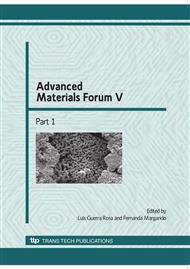p.411
p.418
p.423
p.430
p.437
p.444
p.450
p.459
p.465
Medium Electric Field Electron Injection/Extraction at Metal-Dielectric Interface
Abstract:
The isothermal charging current and the isothermal discharging current in low mobility materials are analyzed either in terms of polarization mechanisms or in terms of charge injection/extraction at the metal-dielectric interface and the conduction current through the dielectric material. We propose to measure the open-circuit isothermal charging and discharging currents just to overpass the difficulties related to the analysis of the conduction mechanisms in dielectric materials. We demonstrate that besides a polarization current there is a current related to charge injection or extraction at the metal-dielectric interface and a reverse current related to the charge trapped into the shallow superficial or near superficial states of the dielectric and which can move at the interface in the opposite way that occurring during injection. Two important parameters can be determined (i) the highest value of the relaxation time for the polarization mechanisms which are involved into the transient current and (ii) the height of the potential barrier W0 at the metal-dielectric interface. The experimental data demonstrate that there is no threshold field for electron injection/extraction at a metal-dielectric interface.
Info:
Periodical:
Pages:
437-443
Citation:
Online since:
January 2010
Authors:
Price:
Сopyright:
© 2010 Trans Tech Publications Ltd. All Rights Reserved
Share:
Citation:


